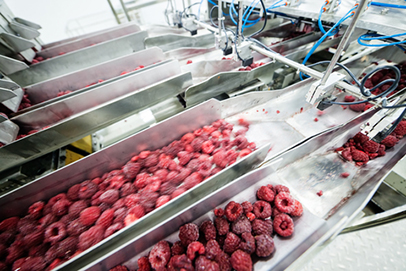It’s been four years since Congress passed the Food Safety Modernization Act (FSMA), and the time has finally come for the U.S. Food and Drug Administration (FDA) to implement its requirements. FDA declared 2015 “the year of FSMA” at the agency’s “FSMA Kickoff Meeting” for food industry stakeholders on April 23, 2015. The first court-ordered deadlines for final rules will be for preventive controls for both human and animal food, which are due by Aug. 30, 2015, and for the final rule for intentional adulteration, which is due by May 31, 2016. Establishment of these deadlines is the first step toward implementation of the law.
 While many of the law’s deadlines are scheduled for more than a year into the future, and specific details within the rules and who oversees them may change, there’s one common theme across all FSMA rules that businesses should consider: Proactively creating a food defense and safety plan — or updating a current one — is the first step to ensure compliance. Taking a proactive approach to food defense will not only make FSMA adherence less daunting for organizations, but it will also ensure that businesses are working to avoid the risks associated with food adulteration and contamination.
While many of the law’s deadlines are scheduled for more than a year into the future, and specific details within the rules and who oversees them may change, there’s one common theme across all FSMA rules that businesses should consider: Proactively creating a food defense and safety plan — or updating a current one — is the first step to ensure compliance. Taking a proactive approach to food defense will not only make FSMA adherence less daunting for organizations, but it will also ensure that businesses are working to avoid the risks associated with food adulteration and contamination.
When planning, it is important to keep the 4As of food defense in mind: assess, access, alert and audit. It’s a four-step methodology for building a proactive and comprehensive food defense strategy. First, businesses should assess the risks throughout their supply chains. They can start by conducting a vulnerability assessment of critical control points to identify where someone could attempt product adulteration — both inside and outside of company walls.
Second, organizations should consider who has access to critical control points. In particular, they should pay close attention to the four key activity types that FDA has identified as particularly vulnerable to adulteration: mixing and grinding activities that involve a high volume of food with a high potential for uniform mixing of a contaminant, ingredient handling with open access to the product stream, bulk liquid receiving and loading, and liquid storage and handling, which is typically located in remote, isolated areas. Businesses should also restrict access to these areas from contractors, visitors and most employees, limiting access to critical employees only. This step not only provides a higher level of protection, but by integrating video monitoring, it can also help businesses identify potentially responsible parties in the event of an incident.
The next consideration is to employ technology that alerts appropriate individuals of intentional and unintentional food adulteration. In this phase, response time is critical. Every passing minute is a minute when more health risks could develop, which leads to a greater chance of negative impacts on brands and, most important, public safety.
Lastly, organizations should audit operational and regulatory compliance to ensure and maintain best food defense practices and provide documentation of compliance to regulators. FSMA promotes the safety of the U.S. food supply by focusing on prevention, rather than reactive response. However, prevention is only as effective as the actual compliance processes put in place. Regular and random auditing using remote video technology can go a long way in confirming that the appropriate preventive measures are in place and working.
In conjunction with creating a plan, businesses should keep apprised of updates to the law and implement best practices for adherence now that will safeguard their organizations from future contamination issues. Consider visiting FDA’s FSMA website, reading related articles on Food Safety News, or attending industry events like the Food Defense Strategy Exchange, which is dedicated to helping businesses protect their brand and their customers from intentional adulteration and help them prepare for FSMA.
